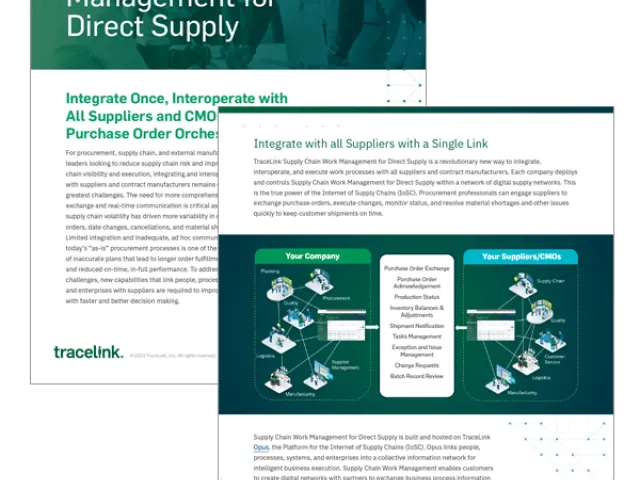Ever-lengthening and complex global supply chains have been put to the test in recent years. From material shortages to demand volatility, manufacturers and their upstream supply chain partners have struggled to deal with unprecedented supply chain disruption.
Many businesses have turned to technological innovation to solve these problems. But they’ve had limited success in meaningfully taming disruption because they have not addressed the core underlying issue: the inability to share information at scale, with all supply chain partners. This is the crucial element that powers shared business processes.
While enterprise systems and solutions enable all the individual links in the supply chain to run successfully on their own, they’ve effectively become digital islands with limited ability to support multi-company collaboration. The interactions that have been digitalized often rely on custom-built point-to-point integrations to each and every supply chain partner, which are costly, time-consuming, and difficult to create and maintain in an evolving regulatory environment.
These system integration woes lead to visibility gaps as data gets stuck in individual silos. In turn, these visibility gaps hamper the execution and improvement of critical supply chain processes, resulting in supply chain disruption.
The Internet of Supply Chains: A Powerful Tool for Seamless Integration
The Internet of Supply Chains (IoSC) is a logical and powerful extension of current efforts to digitally transform and simplify data exchange between supply chain partners.
The IoSC brings all of your supply chain partners together on a digital network of networks, enabling everyone to intelligently execute interoperable processes using shared workflows and a common data model.
Instead of following the conventional hub-and-spoke architectural model, the IoSC is built on a single network platform that allows companies with a diverse set of ERPs and other enterprise systems (e.g., QMS, MRP, WMS, Inventory, etc.) to seamlessly communicate within common business processes. It frees organizations, their suppliers, and other partners from the enormous task of integrating disparate systems through a traditional point-to-point model that consumes time and money. Companies only need to integrate to the IoSC once for a given transaction and they will be connected to all other partners on the network, immediately ready to share business data.
The creation of a robust infrastructure to support partner-to-partner communication, network creation and management, and the orchestration of critical business processes is a true evolution of supplier interoperability. The IoSC brings all of your supply chain partners together on a digital network of networks, enabling everyone to intelligently execute interoperable processes using shared workflows and a common data model.
By linking together all of these digital islands into a cohesive ecosystem, organizations, their suppliers, and their suppliers’ suppliers, gain visibility into the flow of materials and processes. Because they are connected by interoperable networks that link companies, people, processes, and systems around common business purposes, supply chain communication, collaboration, and orchestration of shared workflows across multiple enterprises becomes seamless.
The end result? Greater supply chain visibility, agility, and resilience—and far fewer disruptions. Supply chain business processes can be fully digitalized on the IoSC, leading directly to an improvement in key performance indicators such as on-time, in-full delivery performance, cash-to-cash cycle times, order cycle times, and schedule attainment.
From Vision to Reality with TraceLink
The IoSC is not just a vision–it’s at the foundation of the TraceLink Opus platform. The Opus platform has been used in the Healthcare and Life Sciences industry for years to support track-and-trace solutions and is currently connecting 290,000+ network members and enabling them to meet industry regulatory requirements.
Opus is at the heart of Supply Chain Work Management, a powerful solution from TraceLink that links people, processes, systems, and enterprises into a collective information network for intelligent business execution. Supply Chain Work Management enables customers to create digital networks with partners so they can easily exchange business process information and manage shared tasks through secure, configurable links.
With Opus and Supply Chain Work Management, manufacturers and their trading partners can connect in real time to collaborate and manage tasks associated with all critical supply chain activities. Some examples include:
- Tech transfer
- PO collaboration
- Product quality review
- New product launches
- New supplier selection and onboarding
With Supply Chain Work Management, all partners interact as if they were a single team operating under one roof. In an era of unpredictable disruptions, this level of real-time collaboration and connectivity is required to reduce supply risk and increase supply chain agility.
Deploying the IoSC is the first step to truly digitalizing modern global supply chains, and Supply Chain Work Management is the fastest and easiest path to value through this transformation. If you’d like to see how the IoSC and Supply Chain Work Management can work for your business, get in touch with us today.





